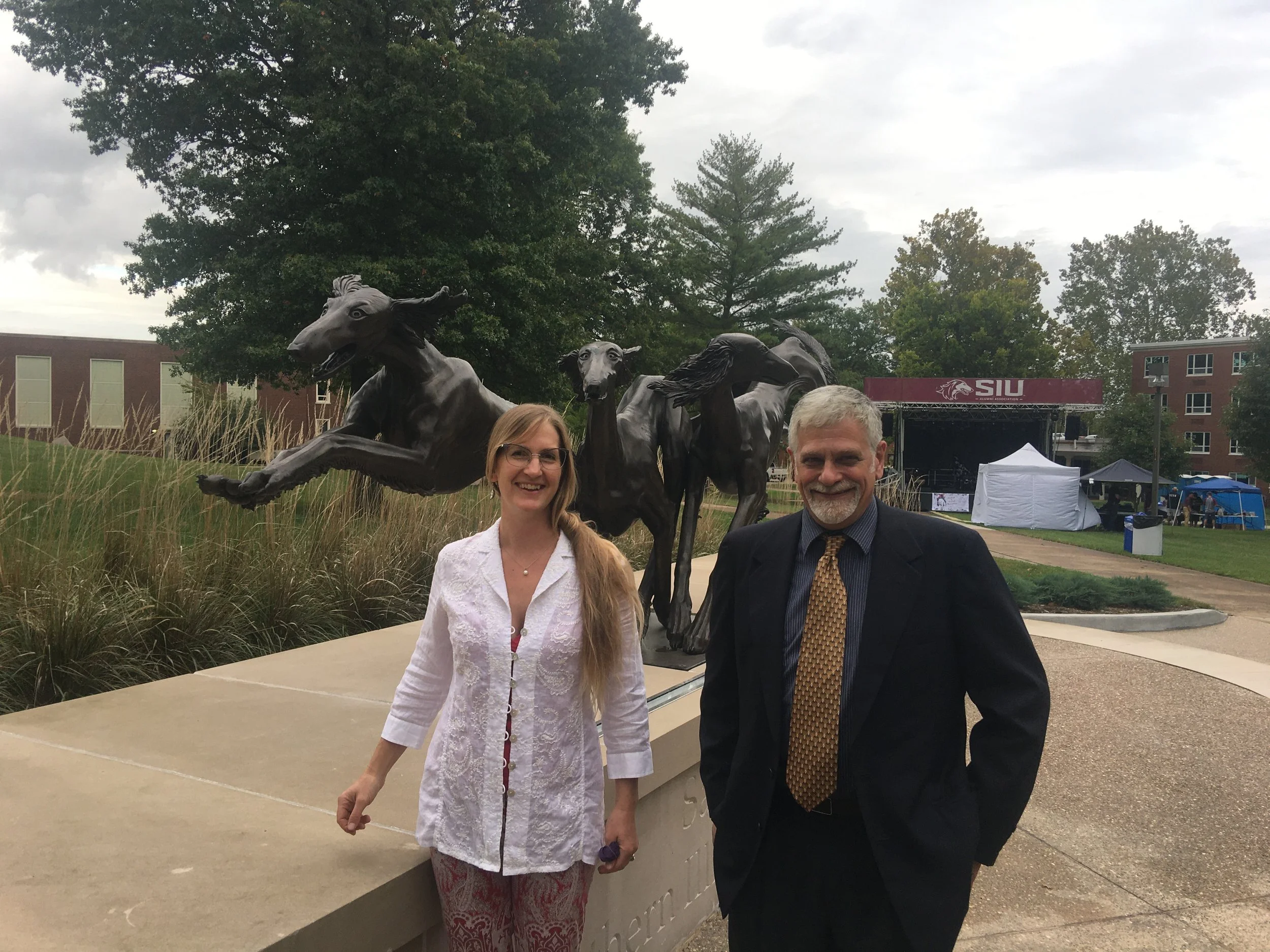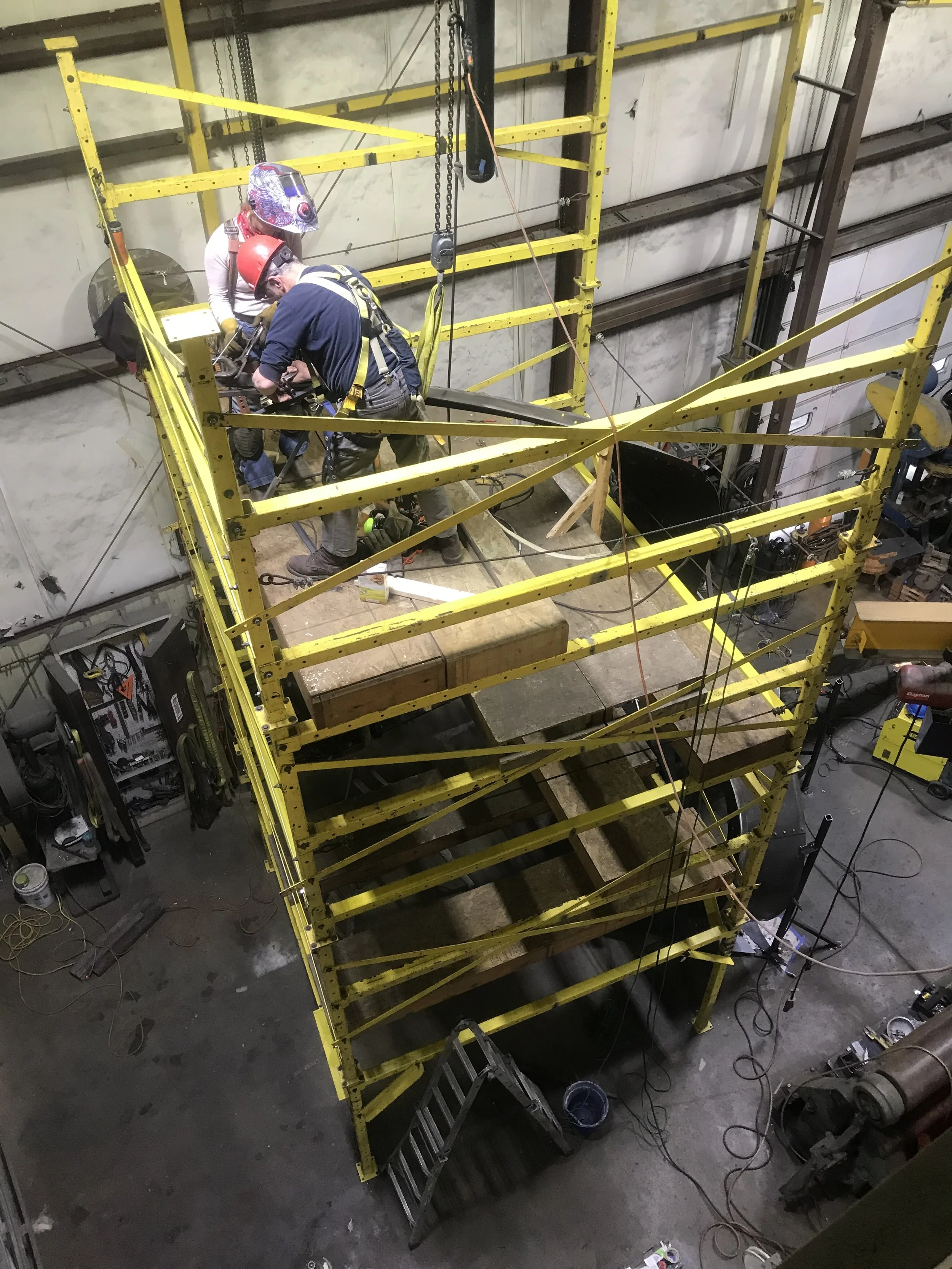MEDWEDEFF FORGE & DESIGN (MF&D)
John Medwedeff discusses the process of creating monumental sculptures
I started MF&D in 1988 with a sense of practicality, thinking that custom decorative architectural metalwork would be its focus, and that occasionally I might get a sculpture commission. The studio practice that’s evolved over the decades, however, is a mirror image of that assumption. Building big sculptures requires space, bridge cranes, industrial equipment, and a dependable, dedicated, and skilled team. The first thing a visitor to the studio notices is the 37’ height of the ceiling in the fabrication bay (often giving them momentary vertigo).
Each project begins with an intense period of design work to develop a concept and a working model, typically made in paper. Usually it’s in 1/24 scale, but for very large sculptures, it can be as small as 1/48 scale. The sculpture’s flat patterns are then digitized so pieces can be CNC laser cut out to create a presentation model at 1/12 scale. Next, and prior to working at full scale, we build a “machinist model” at 1/4 scale that’s mechanically true in every detail and construction methodology to the final sculpture.
At this point in the process, I typically hand off the project to my Studio Supervisor, who will direct the full-scale build. This can take six to eight months. But before construction starts, an engineer is consulted to ensure that my design will have the structural integrity to withstand wind loads, snow loads, and seismic activity, and be compliant with various building codes. Many, perhaps most, artists engaged in monumental art only do design; they subcontract the fabrication to outside companies. The advantage, of course, is they don’t have to invest capital in major infrastructure. But I can’t imagine being comfortable with subcontracting my art. I’m hands-on with every phase of the project, and want the artwork to meet my high standards without compromise.
MF&D’s staff includes Megan Robin-Abbott (BFA, metalsmithing); Sarah Dorau (BFA, sculpture); Gabriel Chaille (MFA, blacksmithing); and economics student Holden Dodson (who keeps the computers humming). Cynthia Roth, my wife, is the office manager, and sends out the applications for public art competitions. Our son James frequently assists in the shop and on installation trips. (Pest Control, our hard-working shop cat, truly believes she is the boss of us all.)
Megan Robin-Abbott and Sarah Dorau assemble the last pieces of Velocity. This 1/4 scale model is our dress rehearsal for the full-scale construction.
The full-scale construction of Velocity was done in stages, each element made of multiple plates of steel formed in the plate roll machine. Megan and Sarah are bolting the pieces together.
Megan Robin-Abbott and I attending the dedication of our Saluki Plaza sculpture (October 15, 2021).
We use a versatile, custom-designed scaffolding system that can be configured in a variety of ways to accommodate a sculpture’s specific geometry. Megan and I are working on the top connection of two elements of full-scale Velocity. (Sarah was working on the exact same point in the 1/4 scale model photo.)




